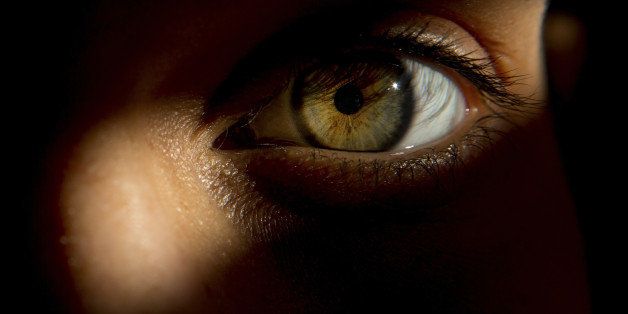
I worked as a consultant for a university some time ago and discovered that the hot topic there was the institution's video surveillance system. Some people expressed surprise and outrage when they discovered that the university operated an elaborate network of sophisticated cameras monitoring almost every corner of the campus. The university had no right to install that technology, critics argued, because it was an invasion of privacy, a violation of academic freedom, and possibly even unconstitutional.
I was surprised that they were surprised, especially given how widespread camera surveillance is throughout most American cities. For many years, universities have been employing comprehensive video surveillance to enhance campus security, and that technology has done much to reduce crime, foster a climate of safety, and even save lives.
I worked at one university where cameras caught a high-ranking administrator in the dead of night stealing a student's bicycle from a locked bike rack. After viewing the video, the administrator, whose annual salary totaled well over a third of a million dollars, resigned--all for a bike that was said to be worth only about $100.
A common crime on many campuses is the theft of purses from office staff members. Street-wise thieves--who know that many office workers store their purses in the bottom right-hand file drawer of their desks--will pass through university office buildings during the lunch hour searching for unoccupied offices. They will then snatch purses from unlocked drawers and flee campus within minutes. Campus surveillance cameras have played a major role in thwarting such thefts nationwide.
Campus officials from many institutions have told me of similar instances in which electronic surveillance has played a positive role. One college's modest library has 35 cameras stationed throughout the building. "It's really for theft prevention," the college's chief information officer told me. "The very first day that we turned the cameras on somebody stole another student's laptop from her unattended bag, and we had the thief stealing it on eight different cameras. We were able to identify the person, and the student got her laptop back that same day. We're just trying to keep people honest."
Another institution was able to thwart a bicycle theft ring in which someone would ride up to a bike rack on one bike and ride away on another. Later, he would return to collect the first bike. The stolen bikes were then sold at a local flea market. Surveillance cameras caught the ring leader, and local police raided his house, finding a room full of bikes.
That university's police chief told me, "We put a lot of resources into campus safety so that when parents send their kids here they know it is going to be a safe place, and we want people in the community to know that when they come on campus to commit a crime we are going to pursue them as if they robbed a bank even though they might have only taken a bicycle."
One urban university helped solve a city-wide crime spree. A group of thieves was breaking into cars in parking facilities and stealing property from them. Nearly 80 cars were burgled, and the city police were stumped. When the thieves targeted a campus parking facility, one of its 75 cameras caught them in high definition. Case solved.
Occasionally, universities install surveillance equipment to solve specific cases. One college was experiencing a rash of muggings in one of its parking facilities, so the campus increased the number and visibility of surveillance cameras; the crimes stopped immediately thereafter.
At another institution, someone was stealing women's underwear from a dorm laundry room. Campus security installed a hidden camera and planted some leopard-print panties complete with special markings. When the police, using the footage, arrested the towering 250-pound thief, he was wearing a pair of the stolen underwear.
At yet another college, campus officials discovered that theater majors were engaging in sexual acts on the catwalks high above the stage in the performing arts theater--during performances. (Students referred to it as the Mile High Club.) The officials installed cameras and were able to identify the culprits.
"We weren't trying to be voyeuristic," the chief security officer told me. "We were trying to prevent a disaster. Can you imagine a standing-room-only crowd for a Shakespeare play and suddenly a couple plunges from the rafters to the stage below?"
Video is used not only to solve crimes but to prevent vandalism and to monitor equipment that might be sensitive to the institution, such as generators or electrical equipment. Most colleges experience a spike in vandalism early in the fall semester when new first-year students arrive on the campus. After the first few perpetrators are caught and made to pay restitution, the vandalism typically drops off.
"We usually don't take students to court because that would really hurt them, but we do make them pay restitution and that hurts their pocket books," said one college official. "We tell them that if they go to the cashier's office and pay restitution by a certain date we won't press charges."
Typically, cameras are placed at building entrances and exits, stairwells, lobbies, parking areas, "at-risk" sites (where someone might be easily attacked), and any location where money changes hands. Key cameras can be monitored in real time, while the footage from others is simply recorded and stored digitally on servers, to be retrieved when a problem arises.
Many colleges and universities are in the process of upgrading their surveillance to Web-based, high-definition, digital equipment that allows the appropriate officials to access all campus cameras from a laptop wherever Internet access is available. Often, institutions then share access to the cameras with local police so that they, too, can monitor the footage when necessary.
That collaboration with local police is especially useful in "active shooter" situations--that is, when armed assailants are in the process of attacking people or threatening to. A Web-based system allows first-responders to view what is happening in real time right from their patrol cars as they approach the scene, vastly reducing the response time to a potential massacre.
Obviously, campus officials must exercise good judgment in how they employ video surveillance. Best practice, and common sense, dictates that cameras not be located in restrooms, locker rooms, or residence halls--only in public areas. Most institutions archive the footage for a specific time period (six months in many cases) and then destroy it. The vast majority of all video footage recorded on a campus is never viewed; it is only viewed when a problem arises.
And campus security must take measures to maintain the chain of custody of all recorded video in the event that a case does enter the legal system. An official may be asked to swear under oath that only certain people had physical access to the servers containing the recorded evidence and to certify that the recording is an official record of the institution.
Camera surveillance is only one component of a comprehensive campus security system, which might include, for example, card access to buildings. Card keys are not only convenient, but the card readers record the comings and goings of everyone, which can place someone at the scene of a crime or rule him or her out altogether. Even the campus' wireless access points play a role, in that the system can track the whereabouts of devices. "If someone steals your iPad," explained one chief information officer, "I can electronically watch that stolen item moving down the hallway and then down a stairwell and then across the quad."
Campus surveillance has resulted in some unintended consequences. The Clery Act of 1990 requires that colleges report annually on all crimes on their campuses, and those statistics allow students and parents (and faculty members, for that matter) to make informed decisions about whether to attend a given institution. Some institutions experienced a sharp increase in the number of on-campus arrests for crimes such as vandalism, assault, and drug possession after increasing their video surveillance, and as a result their crime ratings would be artificially inflated compared to campuses with less surveillance. Nevertheless, the advantage of solving or controlling campus crime far outweighs that public-relations drawback.
So while some on college campuses may worry that video surveillance is an intrusion on privacy, the technology is deterring campus crime, solving those crimes that do occur, making our campuses safe to traverse at night, and even, occasionally, saving lives.
Note: An earlier version of this column was published in the Chronicle of Higher Education.
